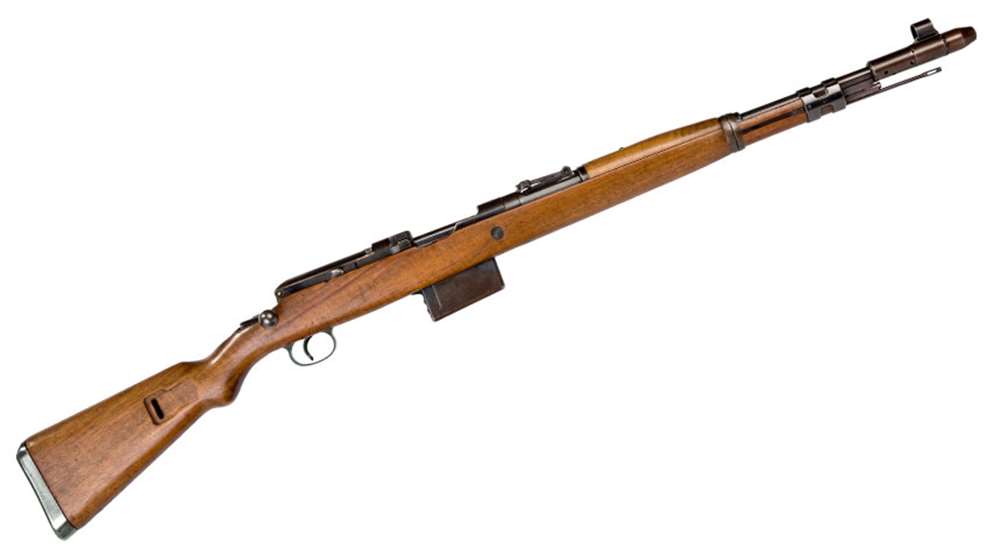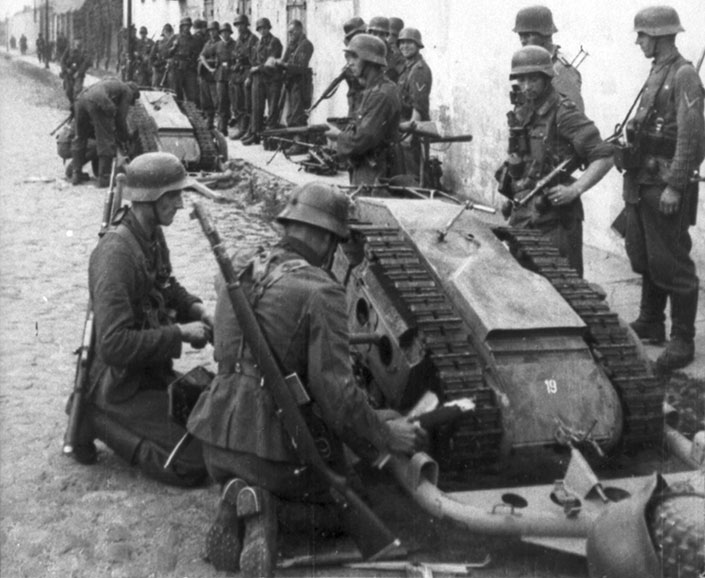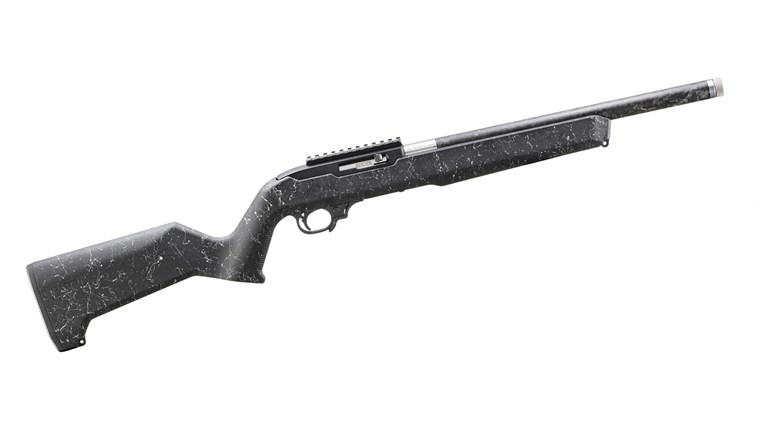
This article, "The G41(M): Germany's 'Gas Trap' Rifle" appeared originally as a Classics column in the June 2017 issue of Shooting Illustrated. To subscribe to the magazine, visit the NRA membership page here and select Shooting Illustrated as your member magazine.
They fought for 63 days without outside support, which is remarkable when you consider the strength of their opponent. They sought to liberate Warsaw from German occupation, and they planned to do it simultaneously with the advance of Soviet forces toward the city as a part of a nationwide uprising called Operation TEMPEST. But the tempest lost momentum when the Russians stopped short of the Vistula River, allowing the Germans time to regroup and counterattack. Nevertheless, the brave men and women of the Polish Home Army’s resistance struggled against the Wehrmacht from the 1st of August through the 2nd of October during what the Germans called the Warschauer Aufstand—the Warsaw Uprising. It is in the Uprising that we catch a glimpse of the obscure Gewehr G41 (M) rifle.

It did not take the Germans long to bring heavy firepower to bear against isolated pockets of resistance mostly located on the west bank of the river. In one such pocket in the city’s Powązki district, the Germans encountered stiff opposition near the old Jewish cemetery there, so they brought in an engineer unit to blast them out. This would be done using the Leichter Ladungsträger “Goliath”—a remote-controlled miniature tank used for combat demolitions. It just so happened that a photographer named Josef Gutermann was there the afternoon these weapons were hauled past Saint Charles Borromeo Catholic Church on handcarts and subsequently prepared for action. While the Goliaths were unquestionably the object of Gutermann’s attention, he nevertheless captured a German rifle in his photographs seldom seen in wartime images: the Gewehr G41 (M).
In 1939, Germany’s Heereswaffenamt (the HWaA, or Army Ordnance Department) published a set of requirements for a 7.92x57 mm semi-automatic rifle to supplement existing stockpiles of updated Gewehr 98M rifles from World War I and new production Kar98k carbines. While the story of what happened next ends with the adoption of the notoriously successful Walther Gewehr 43 semi-automatic rifle, the opening chapter of that story left us with one of the most noteworthy German designs to come out of World War II. Both Walther and Mauser submitted prototypes, subsequently called the Gewehr G41 (W) and the Gewehr G41 (M), to the HWaA in response to its 1939 requirements, something that was in and of itself impressive considering the technical challenges some of those requirements presented. First of all, the HWaA specified that submission rifles could have no gas port drilled in the barrel—in other words, the entire operating system would have to be after the muzzle. Second, submission rifles could have no external moving parts. There could be an actuating handle, but it would have to be non-reciprocating. Third, submission rifles would have to be capable of functioning as manually operated magazine repeaters if the weapon’s self-loading operating system experienced a failure.
Unlike Walther’s submission, the Gewehr G41 Mauser submitted complied with all three of these engineering requirements. First of all, it used the gas-trap system developed by Danish arms designer Søren Hansen Bang—a system that did not require a drilled hole in the barrel. Second, it featured a straight bolt handle that did not cycle with each semi-auto shot. Third, that handle could be used for conventional bolt-action operation, should the need arise. Although Mauser did meet all of the HWaA‘s design requirements, the rifle the company submitted was long at more than 46 inches, heavy at 11.5 pounds, and complicated. It incorporated 18 different springs, and included eight moving parts associated with cycling the action alone. That complexity notwithstanding, in the spring of 1941 Mauser received a pre-production order for 5,000 G41(M) units for testing.
But, in field trials, the rifle proved itself to be somewhat less than satisfactory as a combat arm. There were problems with accuracy and reliability, both of which related to the cone-shaped gas trap mounted at the muzzle. During extended firing, the entire assembly would heat up to the point that there was physical play in the front-sight assembly that affected point-of-impact downrange. Of equal concern was the gas trap’s tendency to build-up carbon fouling deposits to such a level that the rifle would cease to cycle. In addition, the Gewehr G41(M) was poorly balanced and expensive.

When the Heereswaffenamt considered these shortcomings, Walther’s submission emerged as the better design and was eventually adopted in December 1942. Nevertheless, Mauser’s version of the G41 remained in production through early 1943 with approximately 15,000 ultimately delivered to the German government. By then, a modified version of the G41(W) designated G.43 was beginning to realize the full potential of a self-loading service rifle chambered for the 7.92x57 mm cartridge. Interestingly, a significant aspect of the G43’s success was that it did not use the gas trap as designed by Søren Bang, but rather a conventional gas port.
Despite its several shortcomings, the German military issued the 10-shot Gewehr G41(M) rifle to combat units in small numbers during the remaining years of the conflict, and they appear in only a scarce few wartime photographs. From the Soviet east, to Italy and of course the streets of Warsaw during the largest organized resistance action undertaken during World War II, it served non-frontline units without distinction and then quickly faded into obscurity. But the G41(M) deserves to be much more than just a footnote in small-arms history. It wrote an important chapter in the story of the semi-auto service rifle in so far as it helped to demonstrate the impracticality of the Bang-style gas trap—a problem that was already all too familiar to a man by the name of John C. Garand.






































